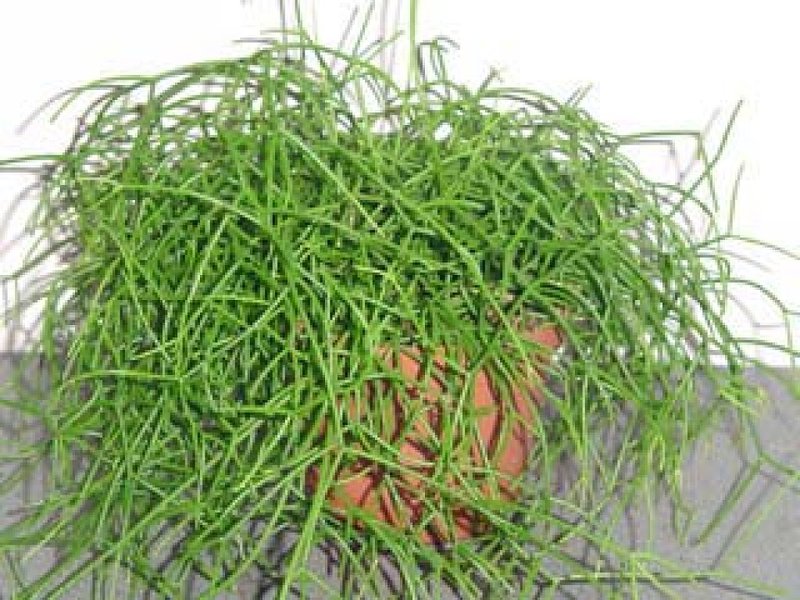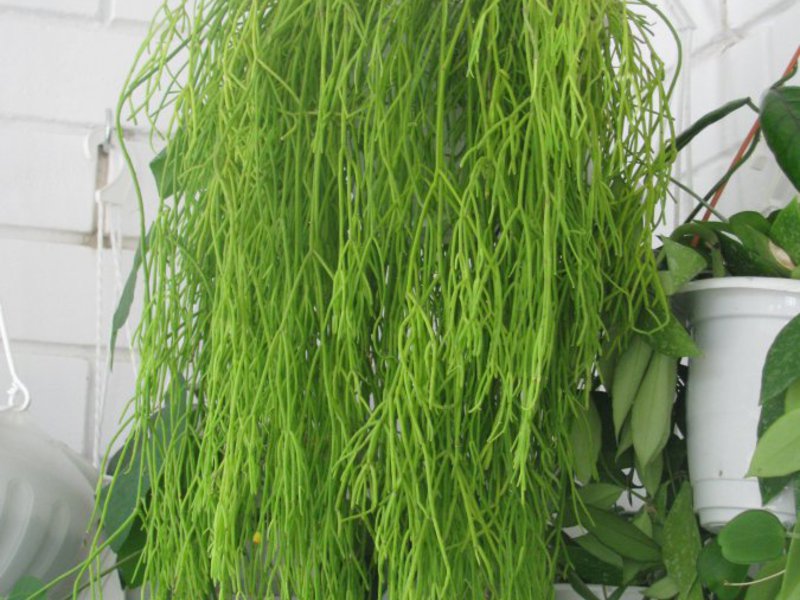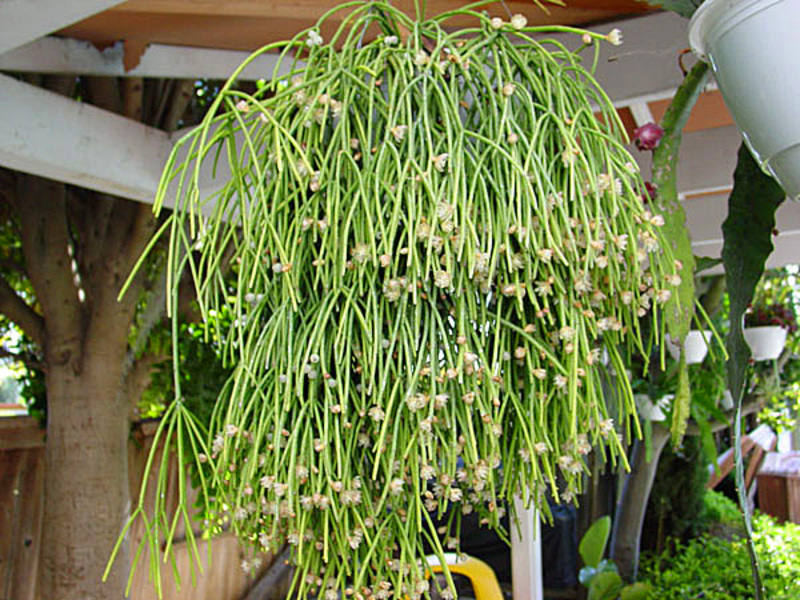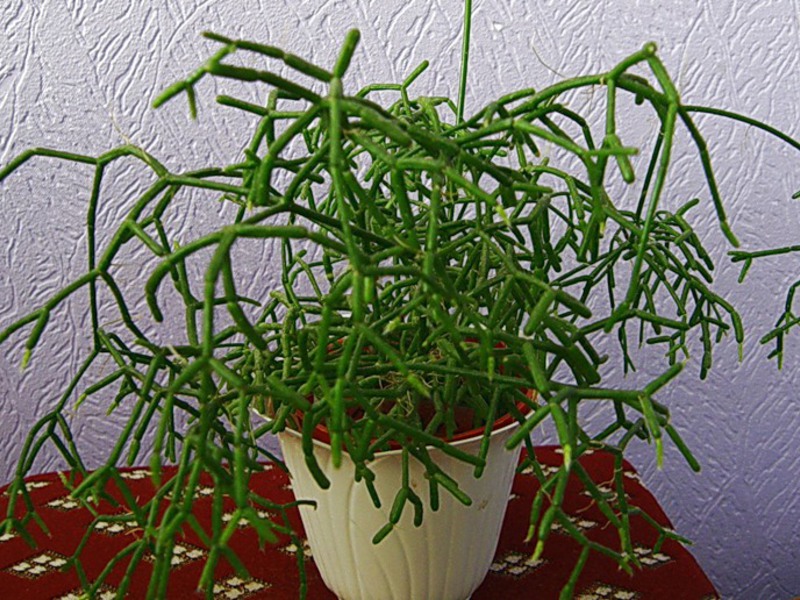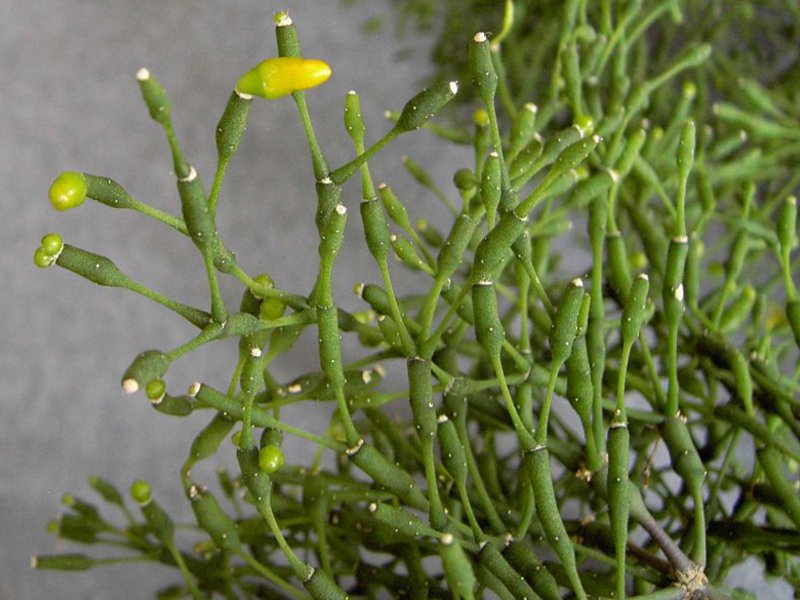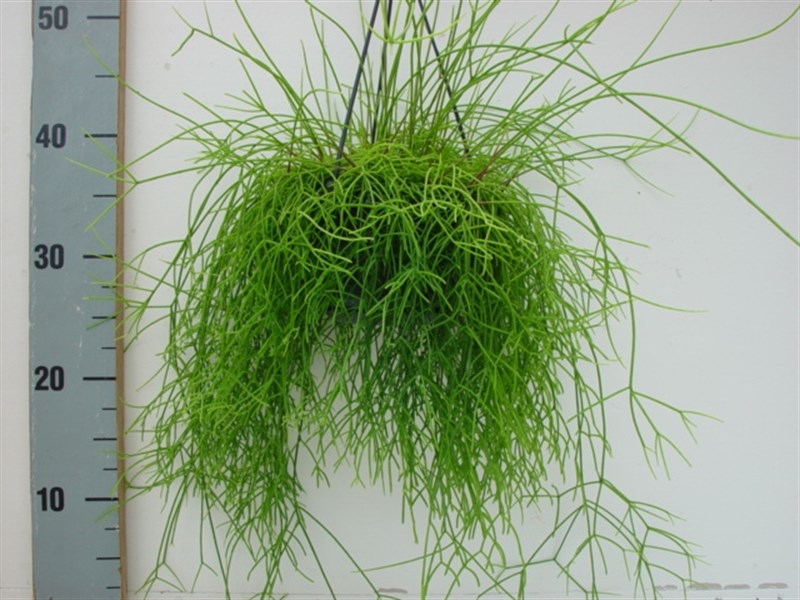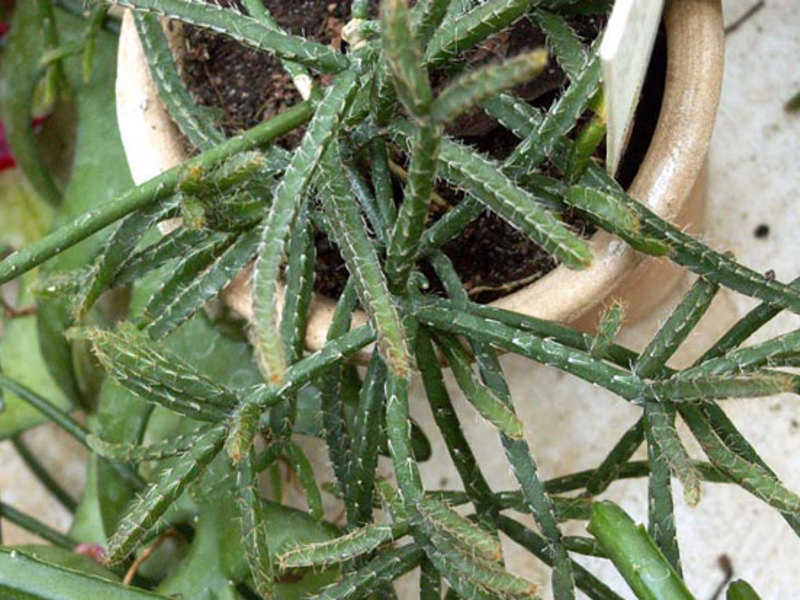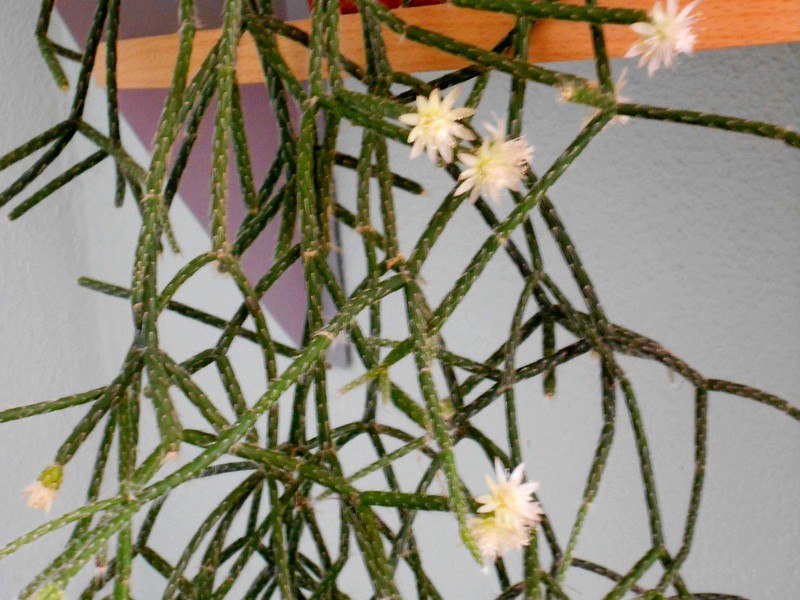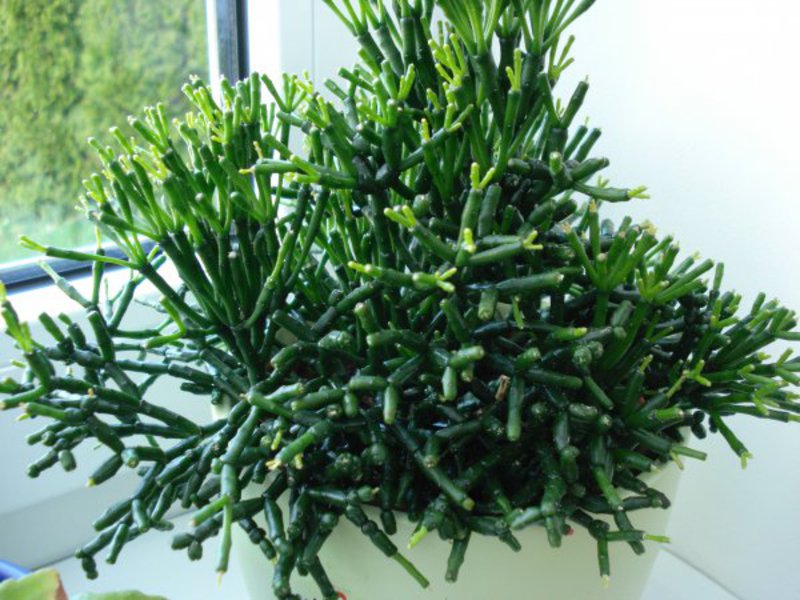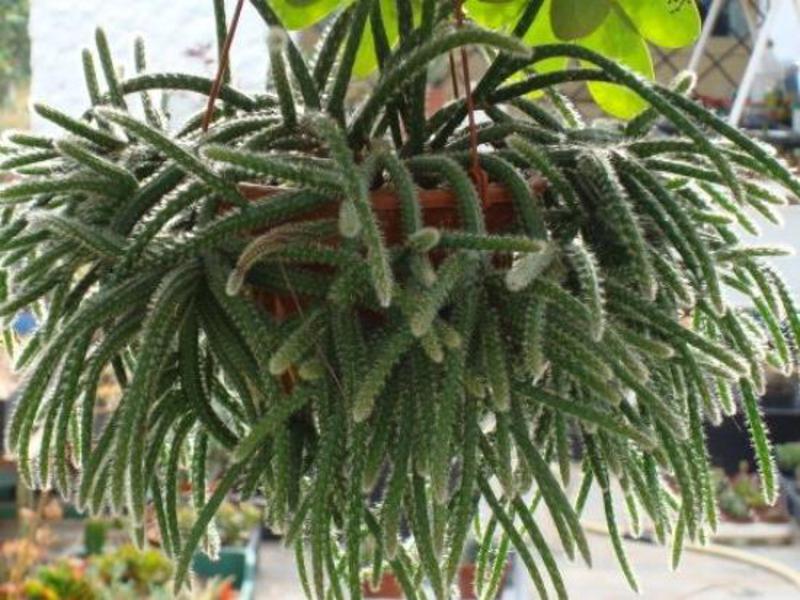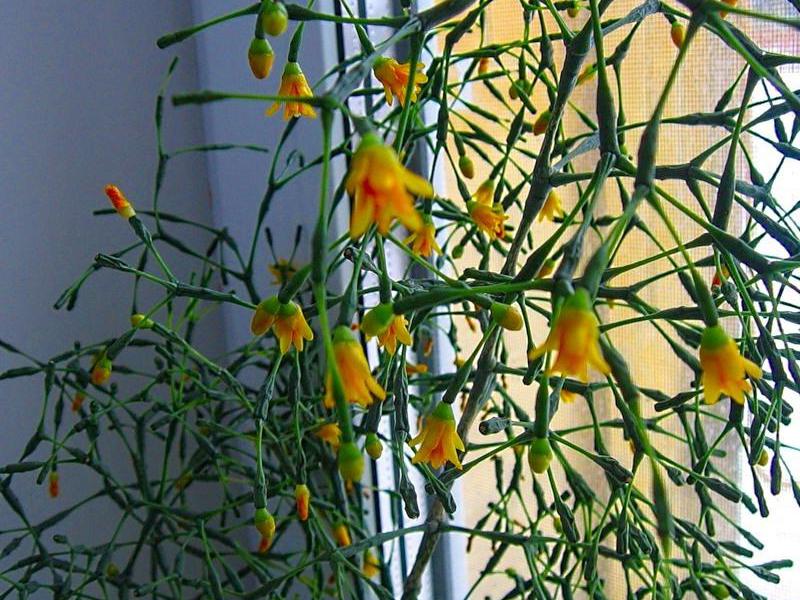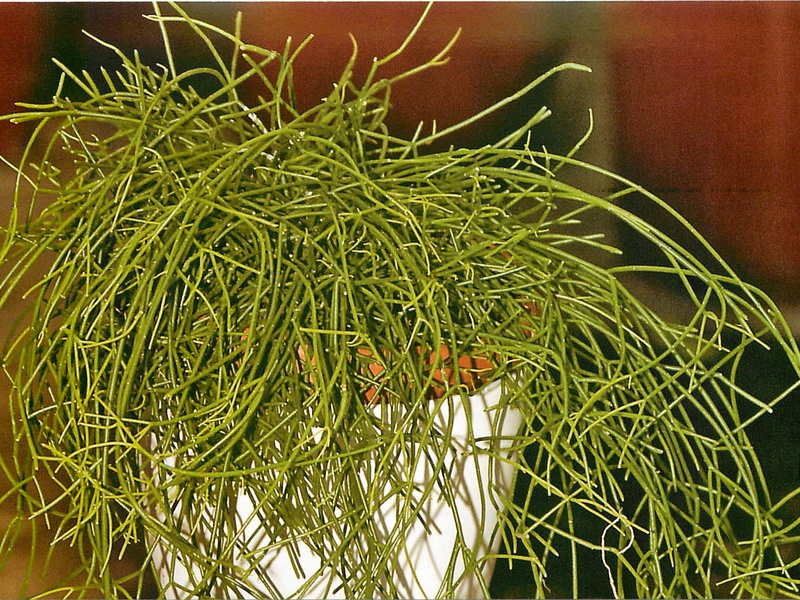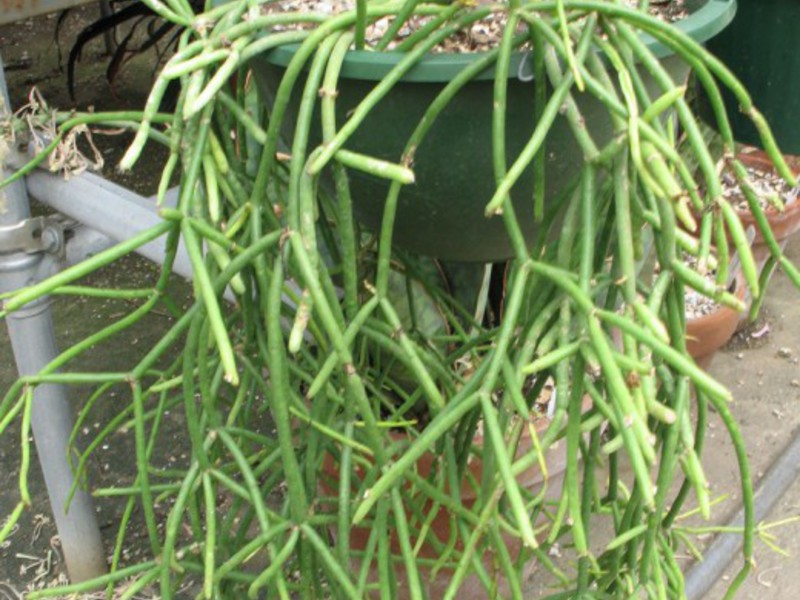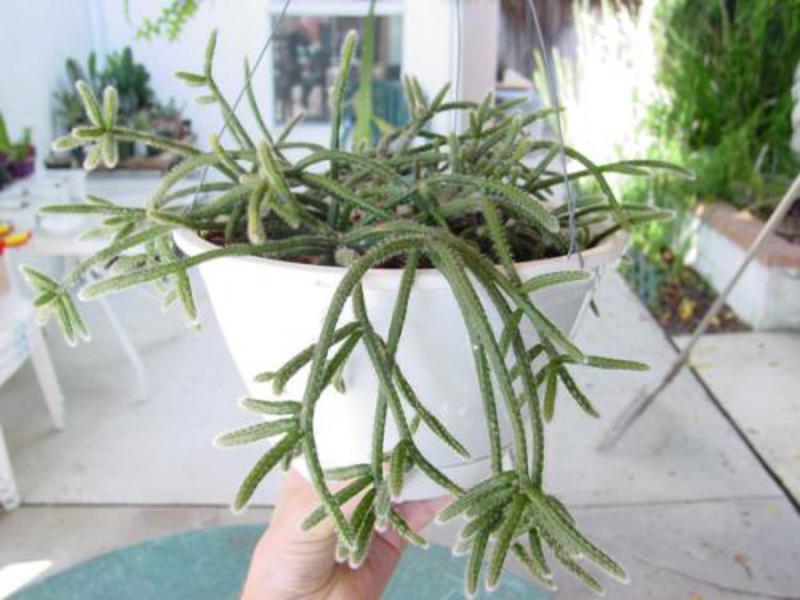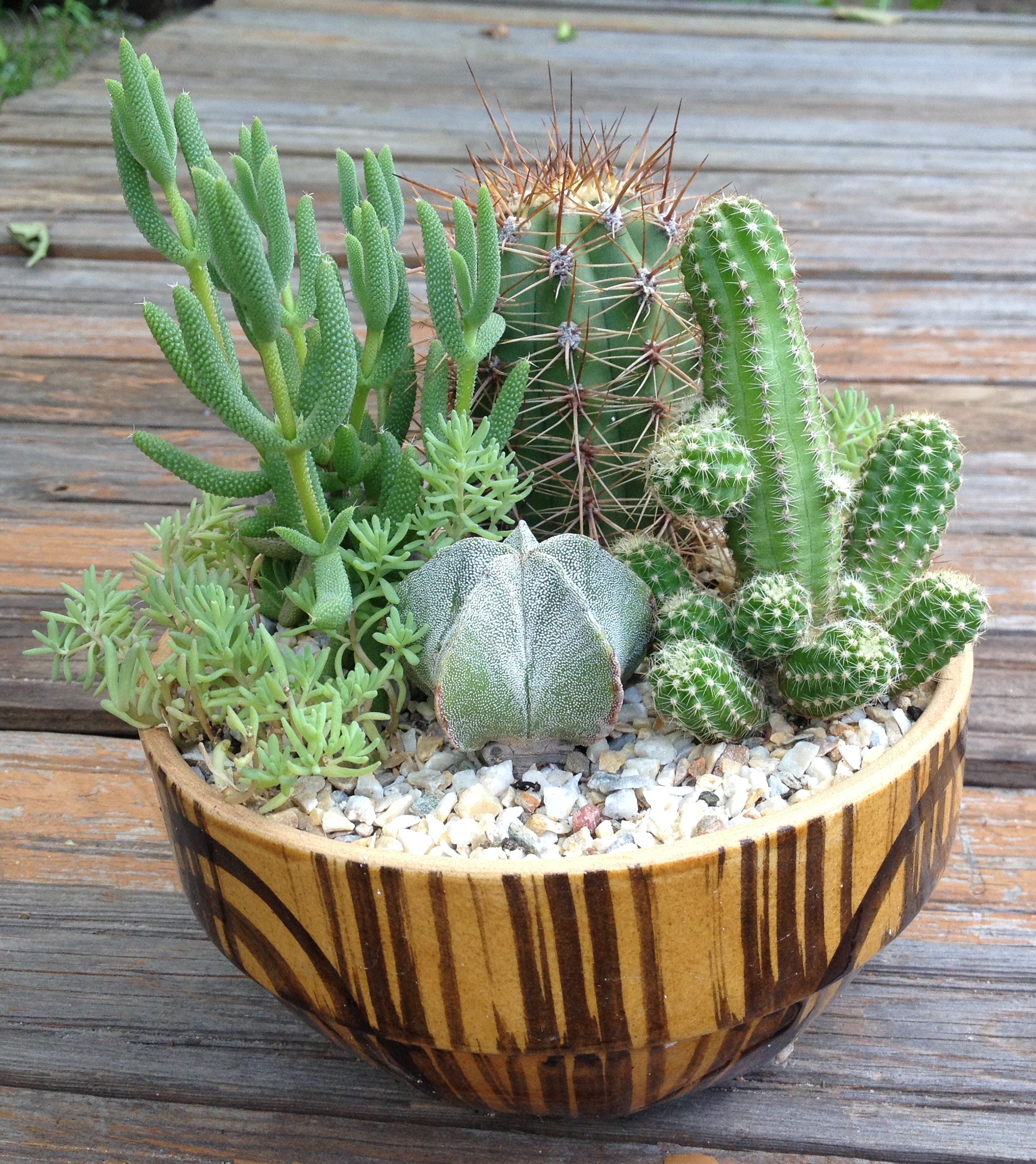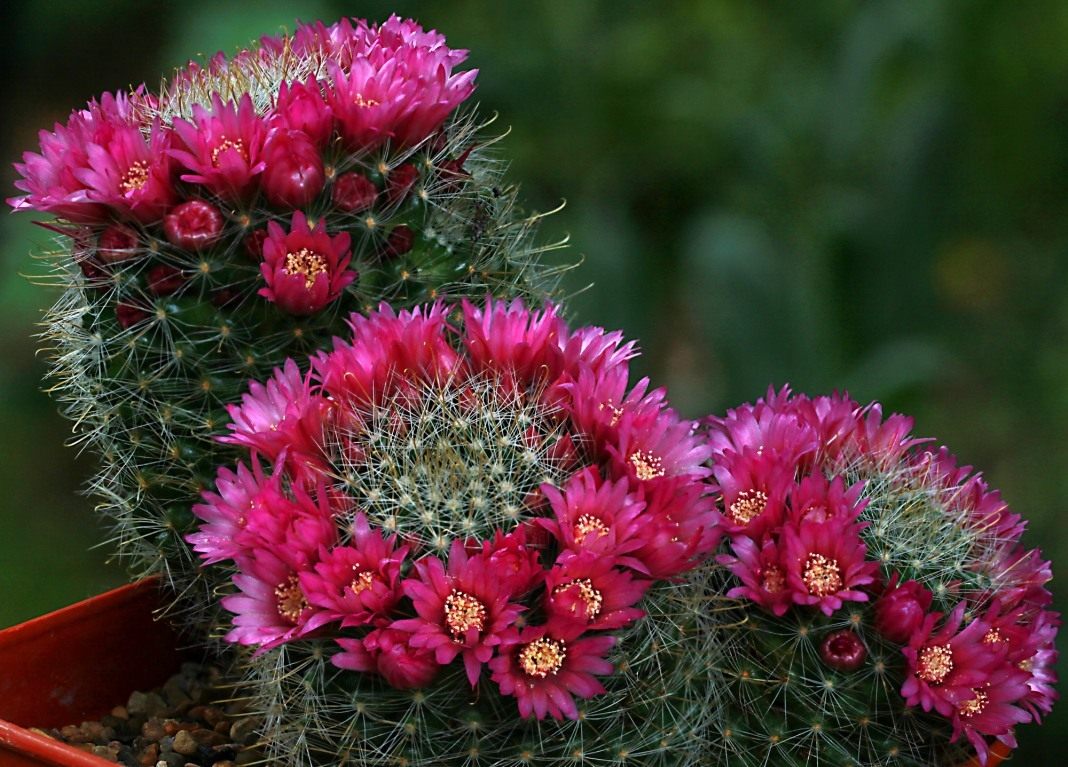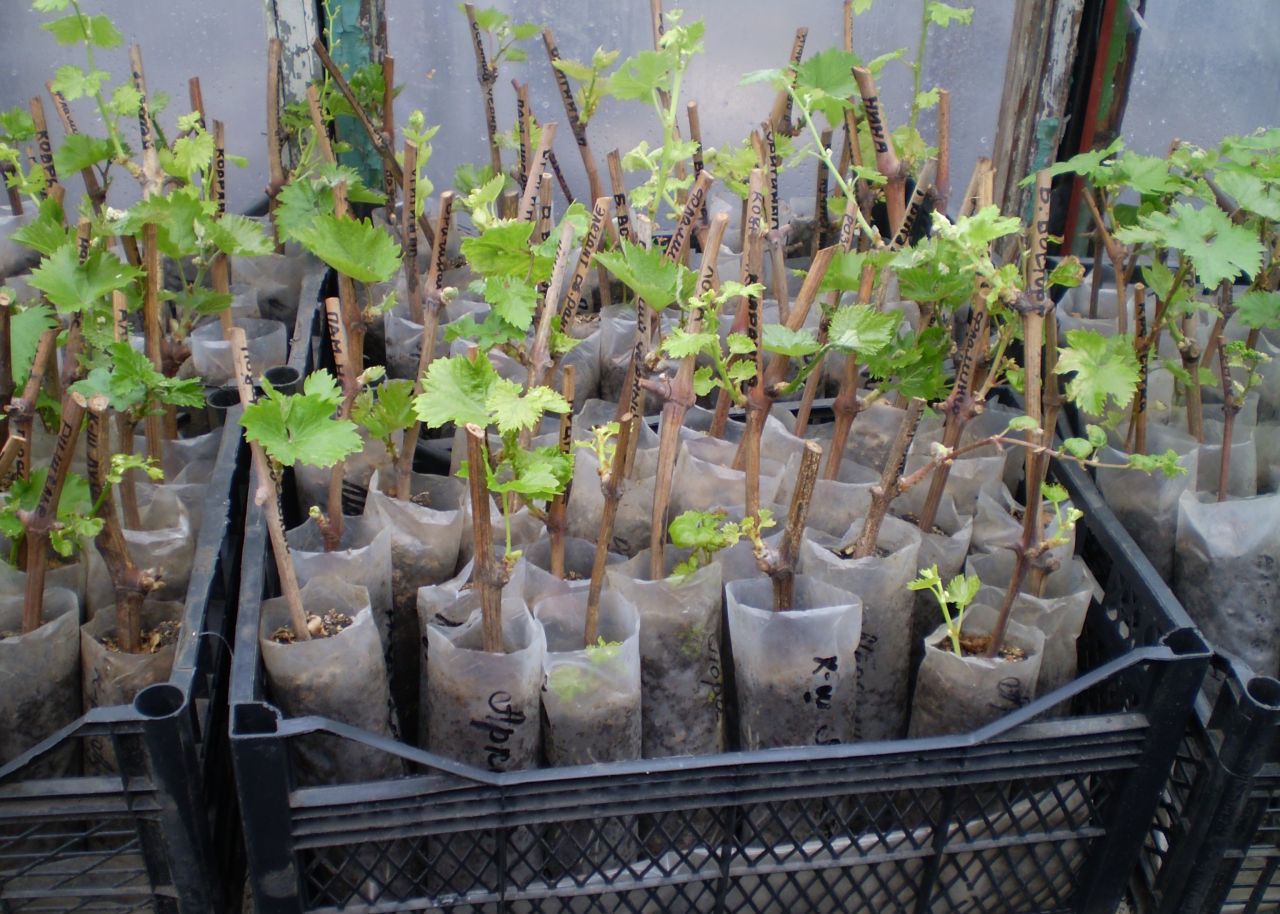Rhipsalis is a special type of cactus. It is an ampelous plant with branched tubular stems. Cactus grows on the island of Ceylon and in South America, Brazil. It settles on the trunks of old trees or on rocks. It feeds on rainwater.
Its flowers come in different colors and sizes. Caring for them is simple.
They are completely different from each other. They fall very exquisitely from trees and rocks, as you can see in the photo below.
Types of ripsalis
 The most common types of ripsalis are:
The most common types of ripsalis are:
- Barchela.
- Gobeliana.
- Rounded.
- Hairy.
- Curly.
- Thick-winged.
- Fluffy.
- Elliptical.
And these amazing plants grow there thanks to the presence of aerial roots. It is through these roots that Ripsalis receives the necessary moisture. A photo of the roots emphasizes the beauty of the culture.
Cacti have no thorns. That is why many growers grow plants on their windowsills.
Ripsalis care at home
At home plants planted in ordinary flower potsfilled with an earthen substrate for ampelous plants.
As a rule, it is a mixture of leaf and turf soils with the addition of peat and sand.
Location and lighting
Some types of cacti develop into a tree-like shape. His pot must be installed below the windowsill so that the shoots can climb the supports made for them.
Hanging cactus varieties should be hung so that the garlands of curly stems effectively fall down. This is clearly seen in the photo.
The flowerpot should be placed where the plant is will be in partial shade... The plant will experience discomfort from direct bright sunlight. You can create comfortable conditions for cacti using horizontal blinds on window openings.
You should not move the pot to another place very often. Any change in the content of a flower is stress for him, which takes time to adapt.
Indoor temperature
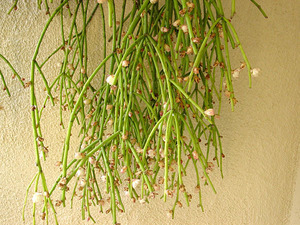 Cactus is an indigenous inhabitant of the Southern Hemisphere. It will grow only at temperatures close to natural. This means that there should be a different temperature for each season.
Cactus is an indigenous inhabitant of the Southern Hemisphere. It will grow only at temperatures close to natural. This means that there should be a different temperature for each season.
But this exotic plant, oddly enough, does not like extreme heat. From early spring to early autumn (period of active growth), the air temperature in the room where the cactus is grown, should not rise above +20 degrees.
Ripsalis must not be frozen in winter. The optimum temperature for him will be + 12-15 degrees.
Ripsalis watering and air humidity
The plant prefers humidified air. This is indicated by its aerial roots. Therefore, at high air temperatures, it should be irrigated as often as possible with filtered water having a soft structure. But this is not recommended in winter.
But watering cacti should be moderate. Waterlogged soil can be harmful to the plant. Therefore, the water should be poured into the sump and not into the flower pot.
During the rest period, care is not needed, only moderate watering, when the top layer of the soil dries slightly.
Fertilizing Ripsalis
When growing ripsalis at home, it must be fed with mineral fertilizers.
It is necessary to carry out mineral feeding during the growing season and active growth of cacti.But you should avoid dressings that contain an excess of nitrogen. During the dormant period, he does not need feeding.
Cactus feed can be purchased at every flower shop and carefully read the instructions when using it.
Transplantation and reproduction of ripsalis
The frequency of transplanting a plant at home is directly related to the age of the plant. Young shoots must be replanted annually. But the transplant should be done only after the flowers have completely fallen off.
Medium-sized plants can be replanted after 2 years. Large individuals - only after 5 years.
When transplanting cacti, you must:
 be sure to drain the soil;
be sure to drain the soil;- deep pots are optional. They need to be increased in width. So it will be more convenient for superficial roots to grow;
- during transplantation, shoots can be cut for further reproduction of cacti. The cuttings need to be dried a little, and the ventures should be buried shallowly into a mixture of peat and sand;
- for better rooting, the flowerpot can be covered with foil. But the plant will need to be periodically ventilated. With the appearance of roots, a sod layer is added to the pot.
In addition to grafting, you can propagate ripsalis and seeds. But these cacti very rarely bear fruit at home, so it is very difficult to propagate them on their own.
Diseases and pests
With illiterate care of the plant, it can hurt. Excessive watering will rot the roots.
With hypothermia, the flowers will shed their buds, as well as segments. The problem will be solved by restoring optimal humidity and temperature conditions.
A radical fight is ahead of pests. Dark sticky plaques on the ripsalis are a sign of scale insect action. A rusty spot on the leaves is the result of flat red mites. The main pests of cacti are spider mites and rot.
To treat the stems and leaves of plants, they must be thoroughly washed with soapy warm water and sprayed with a special compound. In the garden center you can buy an ampoule of actellik. It is diluted in 1 liter of warm water.
